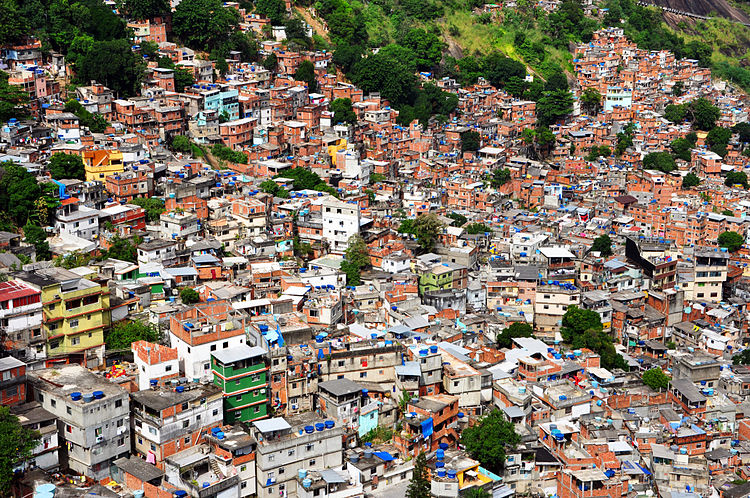Despite the attempts to cleanse Brazil's major cities like Rio de Janeiro and São Paulo of favelas, the poor population grew at a rapid pace as well as the modern favelas that house them in the end of last century. This is a phenomenon called "favelização" ("favela growth" or "favelisation"). In 1969, there were approximately 300 favelas in Rio de Janeiro; today there are twice as many.
In 1950, only 7 percent of Rio de Janeiro's population lived in favelas; in the present day this number has grown to 19 percent or about one in five people living in a favela. According to national census data, from 1980 to 1990, the overall growth rate of Rio de Janeiro dropped by 8 percent, but the favela population increased by 41 percent. After 1990, the city's growth rate leveled off at 7 percent, but the favela population increased by 24 percent. However, a report released in 2010 by the United Nations shows that Brazil has reduced its slum population by 16%, now corresponding to about 6% of the overall population of the nation.

